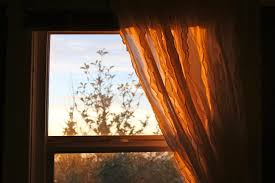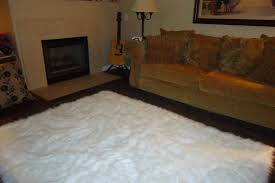Practical Ways to Stays to Survive the Winter and Save on Cost
Winter is here and many of us are thinking of ways not only to keep our homes warm but to also save a little money while doing so. It is estimated that it will cost upwards of $2200 to  keep your home warm this winter…and this is quite a bundle.
keep your home warm this winter…and this is quite a bundle.
It may not be so easy to keep your home cozy, especially if it is an older home with dated insulation. KEY Moving has identified a few tips on not only how to save money but also how to make sure the temperatures inside your home are comfortably warm all winter long.
1. Opt for a programmable thermostat. This kind of thermostat will insure that your bill stays low while keeping your efficiency at high levels. Rather than chancing your thermostat manually each time you leave the house or return, research shows that the following temps/times during the week if your house is empty during the day (and also it is recommend setting the thermostat to 55 degrees when you go on vacation for a few days or more):
- 6 a.m. to 9 a.m. = 68 degrees
- 9 a.m. to 5:30 p.m. = 60 degrees
- 5:30 to 11 p.m. = 68 degrees
- 11 p.m. to 6 a.m. = 60 degrees
Although the suggested nighttime temperatures may seem on the chilly side, remember that it is believed that cooper temps, in the mid 60s not only promote better sleep but may even increase your metabolism.
2. Let it shine. Let the sunshine in once the sun is up comes up. You can capture as  much of the free heat as possible and even on the colder the days, the sunlight still provides warmth. When leaving the house, leave your blinds up and curtains open, especially in areas of your home where sunlight streams during a good portion of the day.
much of the free heat as possible and even on the colder the days, the sunlight still provides warmth. When leaving the house, leave your blinds up and curtains open, especially in areas of your home where sunlight streams during a good portion of the day.
3. Keep out the dark. Once After sunset, try to retain as much heat as possible by closing your drapes and consider investing in insulated curtains for use in winter. Insulating your windows and doors as well as thresholds can save you money and maintain warmth.
![images[5]](https://keymoving.com/wp-content/uploads/2014/12/images5.jpg) 4. Monitor wood-burning fireplaces. Fireplaces might seem like a no-brainer, but they are extremely inefficient for the rest of your living space. Although it will be nice and toasty by the fire itself, the rest of the house will chilled by the cold air being pulled in elsewhere (this is a result of a physics principle call stack effect). If you do enjoy a nice fire, just remember to keep the flue closed when the fireplace isn’t in use. Not doing so basically means you have an open window in that room, letting warm air escape and colder air in.
4. Monitor wood-burning fireplaces. Fireplaces might seem like a no-brainer, but they are extremely inefficient for the rest of your living space. Although it will be nice and toasty by the fire itself, the rest of the house will chilled by the cold air being pulled in elsewhere (this is a result of a physics principle call stack effect). If you do enjoy a nice fire, just remember to keep the flue closed when the fireplace isn’t in use. Not doing so basically means you have an open window in that room, letting warm air escape and colder air in.
5. Move your furniture. You might have blocked your heating vents with your furniture mistakenly when you moved in. Make sure that vents are not blocked as this is a common error in many homes. It’s better to have a clumsy looking living room for the winter if it insures you have a good heat source that is accessible. Blocking return vents in a forced-air central heating system could also cause air pressure issues, which further disrupts the flow of heat.
6. Seal those leaks. There can be air leaks in your home beyond windows and ![under-door-draft-stopper-lowes[1]](https://keymoving.com/wp-content/uploads/2014/12/under-door-draft-stopper-lowes1-300x193.jpg) doors. Perhaps your attic or basement (where cements meets the wood frame), even kitchen hood vents can be unlikely culprits in letting cold air into your home. Consider caulking to be your best winter friend.
doors. Perhaps your attic or basement (where cements meets the wood frame), even kitchen hood vents can be unlikely culprits in letting cold air into your home. Consider caulking to be your best winter friend.
7. Close the doors. If most of your time is spent in a particular part of the house and other areas are most unused, you can close those doors and create a sauna effect. For example, you can warm your office or your bathrooms at night by leaving the doors closed. It might seem simple, but blocking the air from escaping those spaces keep that room a little warmer for you.
Also, consider closing doors to rooms in your house that you do not commonly use, like extra bedrooms and just close the vents in those rooms from heating them needlessly. This will lower the square footage in your home that you are trying to keep warm and the rooms that you do use will stay warmer longer and will less energy output. This will also decrease your heating bill.
8. Use the oven. Baking, convecting, and broiling things will keep your house warmer, especially in rooms nearest the kitchen. Don’t be afraid to roast a chicken or bake a ton of casseroles when the temperatures dip!
 9. Decorate your wood floors. It is estimated that up to 10% of a home’s heat loss is due to uncovered or uninsulated wood floors. Carpets were invented to keep rooms warmer…use them in the winter as they do a good job at trapping heat. You will notice a difference as your floors will no longer seem drafty.
9. Decorate your wood floors. It is estimated that up to 10% of a home’s heat loss is due to uncovered or uninsulated wood floors. Carpets were invented to keep rooms warmer…use them in the winter as they do a good job at trapping heat. You will notice a difference as your floors will no longer seem drafty.
10. Keep yourself comfortable. It is much more vital to keep yourself warm![warmwintersoups[1]](https://keymoving.com/wp-content/uploads/2014/12/warmwintersoups1-300x300.jpg) than your home. So do what you must. Wear warm clothing, pull out your thick blankets, sip your tea and wear those wool socks. It’s about being practical and staying comfortable and healthy during the winter months.
than your home. So do what you must. Wear warm clothing, pull out your thick blankets, sip your tea and wear those wool socks. It’s about being practical and staying comfortable and healthy during the winter months.
